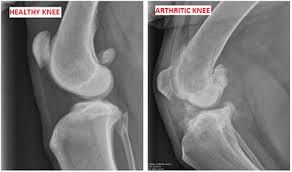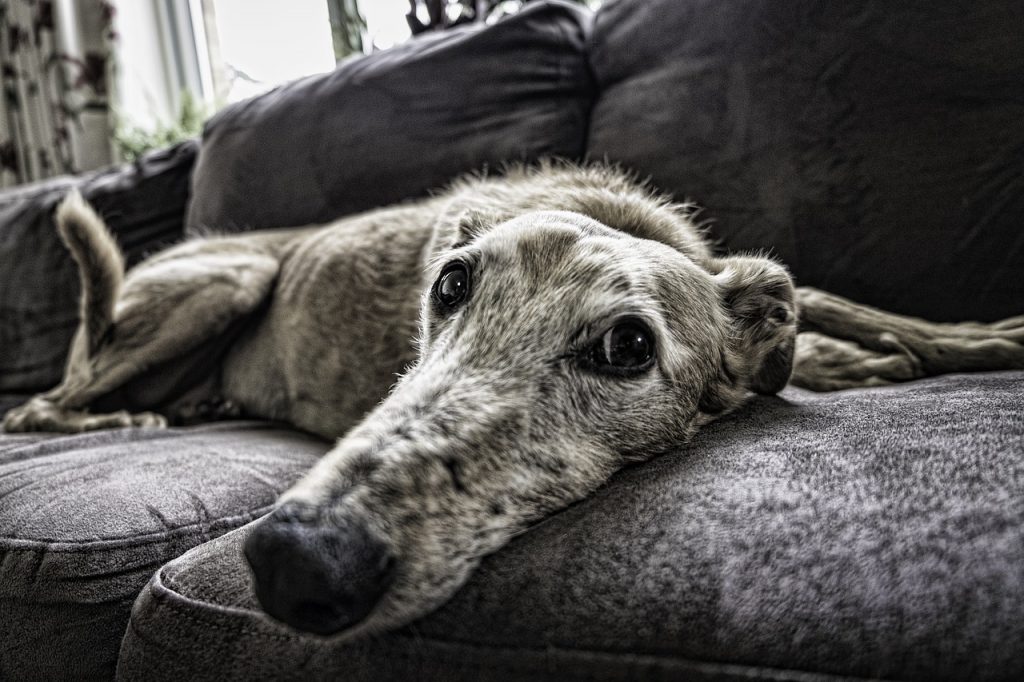You might have noticed that your older dog is slowing down more recently. They may be playing less and sleeping more. Although this might seem normal for a dog as they age, Arthritis could be the reason.
*Arthritis replaces Osteoarthritis in all cases this article
Early Signs
Arthritis is not obvious in its early stages. It may not be until the cartilage in the joint is worn away, and the bone surfaces are exposed, that outward signs are seen. In addition, dogs tend to mask their pain.
If your older dog has any of the signs below, they may be suffering from Arthritis and dealing with some degree of pain:
- Limping or difficulty moving
- Slower to get up after a sleep / sleeps more
- Avoids exercise like running or “zoomies”
- Tires more easily on walks
- Reluctant to go up or down stairs
- Hesitant to, or avoids, jumping in or out of the car
- Has problems jumping on or off objects e.g. bed, sofa, garden, deck
- Doesn’t play as much as they used to
- Gets irritated when petted or touched
- Less interested / tolerant of other dogs and people
Arthritis may not be the only cause of these symptoms, so it’s important to take your dog to the Vet for a thorough examination.
If you have a younger dog displaying any of these signs it’s also important to get them examined by your Vet. While they may not have Arthritis they may be in pain. Common causes of musculoskeletal issues in younger dogs include hip and elbow dysplasia, patella luxation, and cranial cruciate ligament injuries to name a few. You can find more information on these conditions here.
Examination & Diagnosis
Your Vet will want to know about the changes in your dog’s behavior (small details matter). They will observe your dog and look for signs of a limp, offloading, stiffness, or loss of muscle mass. They will then move the joints to assess for range of motion and any pain response, and they’ll to listen and feel for any crackling or grating. Any changes from normal may indicate Arthritis.
X-rays are the best way to confirm an Arthritis diagnosis.

Arthritis Treatment
“Treatment of Arthritis in a dog is best started early”
By the time your dog outwardly shows signs of Arthritis, they may be further along the Arthritic process than if you, or I, were to present with pain associated with Arthritis. So don’t hold off taking your dog to the Vet.
Initially your Vet may start your dog on a course of medication to try and reduce your dog’s pain. They may also discuss supplements to add to your dog’s daily routine, as well as rehab and manual therapy options. In severe cases they may discuss surgeries like joint replacements.
Arthritis can’t be cured, but it can be managed.
Having seen your Vet you may also be interested in seeking advice on your dogs Arthritis management from a canine rehabilitation professional / manual therapist. They will usually be professionals that have completed the CCRP or CCRT course in the USA. Alternatively they may be a Vet, Physiotherapist, Osteopath, or Chiropractor with further post graduate training in the holistic treatment of animals with musculoskeletal conditions.
You can find out more information on supplements that can help your dog with Arthritis by clicking here. This article discusses the supplements that have been shown to be beneficial for Arthritis. It includes some injectable options (e.g. adequan, cartrophen) that are only available through your Vet.
There are also strategies for home that may help make your dog more comfortable. You can read more in my Arthritis Home Strategies article.
Over the coming months I’ll be adding a rehab guide with exercises that you can do at home. If you have any questions about your dog’s Arthritis or live in Wollongong, NSW, Australia and would like to book a treatment then contact me here.

